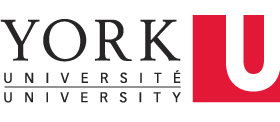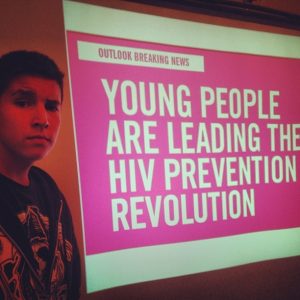
York Environmentalist examines how a group of Indigenous youth leaders embraced leadership in the context of HIV prevention.

Sarah Flicker

Indigenous youth leaders from across Canada considered the most successful leadership skills in the context of HIV prevention
“By investing in youth leadership and by supporting Indigenous models of youth leadership, researchers, policymakers, educators and communities can gain key allies in the fight against HIV,” Flicker explains.
HIV infection rates seven times higher for Indigenous youth
The need is great. In Canada, HIV is on the rise among Indigenous youth, with rates of new infections currently at seven times that of non-Indigenous youth.
Flicker believes that the elevated rates are likely explained by colonization, racism and poverty, and leadership could be the key to bridging the gap. They point out that models of promoting Indigenous youth leadership are noticeably absent in the literature.
Project aspires to social change
With leadership top of mind, the researchers explored how a group of Indigenous youth leaders, who participated in a community-based participatory action research project, Taking Action, took up the notion of leadership in the context of HIV prevention. The project planners used the word ‘action’ as a reminder of the end goal: meaningful action and social change.
In this project, guided by the National Aboriginal Youth Council on HIV and AIDS, a group of community activists, researchers and students imagined new approaches to respond to the elevated rates of HIV in Indigenous communities. Importantly, in this project led by the Native Youth Sexual Health Network, team members used research methods that were collaborative, equity-based and with an emphasis on the individual’s unique contribution.

The project planners used the word ‘action’ as a reminder of the end goal of meaningful action and social change
In the first phase of this project, from 2007 to 2011, team members worked with more than 100 youth in six communities to create art that considered the relationship between inequity and HIV. However, youth requested more opportunities to meet with peers from different communities and learn from each other.
Digital stories illustrate personal journeys

Young people are leading the way in HIV prevention
In response to this request, Taking Action II invited Indigenous youth leaders from across Canada to a week-long retreat at York, in summer 2012. There were 18 youth from First Nations, Métis and Inuit communities, 11 female and 7 male, ranging from ages 16 to 26 years.
During the retreat, the youths created three-to-five-minute digital stories or visual narratives about HIV leadership, activism and engagement. With guidance and technical support, they recreated their personal journey. At week’s end, the visual narratives were shared – a process that was emotionally arduous for many.
Researchers interview to gather data
Next, interviews were conducted with the youth where they explained their stories and discussed their feelings about being Indigenous. They were also asked what being a youth leader means to them. In a second interview, after the stories were publicly screened, the youth were asked to reflect on a concrete example of their leadership and how it felt to share their stories publicly.
Youth identify qualities of good leadership
Leadership qualities identified by the youth included being confident, trustworthy, willing to listen, humble, patient, dedicated, resilient and healthy.
Hearing the voices of these participants, speaking in their own words about these qualities, has impact:
- Trustworthy: “Doing the work with the people that trust in you and believe in you or even would put their life in your hands. You would have to work with them and show them that you are actually caring.”
- Willing to listen: “A lot of people have this image that leaders are the ones that are talking, but I feel a lot of leaders, youth leaders, are the ones listening … being able to support people even though they may not be necessarily supported in their decisions.”
- Humble: “It’s not about having that title of leadership … you are out there to make a difference, you are out there to work with one person at a time, to work with another person, and to build a community that is solid.”
- Dedicated: “You got to be dedicated to the change that you want to see in your communities and it’s not going to be easy. But if you really believe in something then you are going to continue to get back up and keep working towards different approaches.”

A Taking Action participant
“When you follow your heart you provide that path for others to follow. […] We are following our heart back to that remembering of who we are as Indigenous people.”
Participants also identified challenges to leadership, such as stigma, pressure and intergenerational trauma, and put forward suggestions for successful leadership:
- Starting small;
- Getting an education;
- Mobilizing the community;
- Teaching others; and
- Preserving culture.
The final suggestion was best expressed by one participant: “If I can help somebody grow or help them find an opportunity or to even be there just to have a conversation with them, then I know that I am doing what my ancestors would like me to do. And that’s just following my heart. ’Cause when you follow your heart you provide that path for others to follow your lead, and I think that that’s what a lot of our young people and a lot of our people are doing ’cause we are following our heart back to that remembering of who we are as Indigenous people.”
The youth often returned to the idea of the importance of their ancestors and their culture to leadership.
Findings point to policy implications
The researchers emphasize that because the youth were producers of knowledge, they could also play roles as agents of change, influencing policy, programming and education. If this were the case, Indigenous models of youth leadership, researchers, policymakers, educators and communities could work together in the fight against HIV.
The article, “When you follow your heart, you provide that path for others,” was published in the International Journal of Indigenous Health (2016). To learn more about Professor Flicker’s work, visit their website.
By Megan Mueller, manager, research communications, Office of the Vice-President Research & Innovation, York University, muellerm@yorku.ca
original source: http://research.info.yorku.ca/2017/04/policy-relevant-lessons-emerge-from-indigenous-models-of-leadership/
[/cmsms_text][/cmsms_column][/cmsms_row][cmsms_row data_padding_bottom= »50″ data_padding_top= »0″ data_bg_parallax_ratio= »0.5″ data_bg_size= »cover » data_bg_attachment= »scroll » data_bg_repeat= »no-repeat » data_bg_position= »top center » data_color= »default » data_padding_right= »3″ data_padding_left= »3″ data_width= »boxed »][cmsms_column data_width= »1/1″][/cmsms_column][/cmsms_row]
